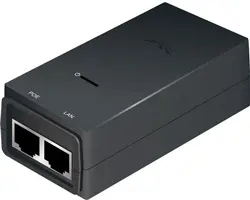Troubleshooting & Support
Tips for debugging common internet problems
Troubleshooting & Support
Last updated: August 12, 2023
Outline
Here are some tips and tricks to debug common internet problems before getting in touch with us. If in doubt, give us a call or send us a message.
1. Is everything plugged in and turned on?
Everyone—including us—has made this mistake before. We swear it’s plugged in and turned on, but somebody else comes in and finds we were looking at the wrong cord. Double-check your connections for power and networking cables.
Please do NOT unplug Power over Ethernet (PoE) devices from Kiza without speaking to us first. Unplugging these can severely hamper the chance of us fixing your issue remotely and require a site visit to get things running again. When our radio dishes and routers are online, we can often monitor, debug, power cycle (reboot), configure, and upgrade the devices remotely.

If you don’t know what the equipment is, it’s best not to touch it. Please take a photo and send us a message first. Plugging the wrong thing into the PoE side of the injector can damage your equipment!
2. Plug in to your router
Many devices nowadays run on WiFi. Unfortunately, WiFi can cause problems from poor speed tests to completely dropped connections. When possible, plug directly into your router or WiFi access point via an Ethernet cable to eliminate potential problems. Turn off WiFi on your device if plugging in directly, to ensure it uses the best connection and does not continue to use WiFi.
3. Restart your device
Sometimes simply restarting your computer, phone, etc. can solve the problem.
Note: If you power cycle the radio servicing your location, it can take up to 5 minutes to restart and reconnect to our service, so please be patient.
4. Reboot your router
There are a variety of WiFi routers on the market, including Ubiquiti’s Amplifi HD, Amazon’s eero, and many more. While the exact steps may vary, the concept is the same.
- Unplug the power cable (or turn off the power switch, but most models don’t have this).
- Wait a minute (at least 30 seconds, seriously!).
- Plug it back in.
- Wait another minute for the router to initialize and reconnect.
- Test the internet again.
5. My internet still seems slow. Now what?
There are many possible reasons why your internet might be slow. Some common causes include:
- Distance from the WiFi router: The farther you are from the router, the weaker the signal and the slower your internet speed will be.
- Interference: Other electronic devices and appliances such as cordless phones, microwaves, and baby monitors can cause interference with your wireless signal, slowing down your internet speed.
- Outdated hardware: Old or outdated routers or wireless devices can’t keep up with modern speeds and device standards.
- Malware: If your computer is infected with malware, it can slow down your internet connection by using up your bandwidth.
- Too many devices connected: Having too many devices connected to your network can slow down your internet speed as they all compete for bandwidth.
- Background apps and processes: Applications or programs running in the background can consume a significant amount of your internet speed. Automatic app updates on iOS, for example, consume hundreds of megabytes or even gigabytes weekly.
- Obsolete Operating System: An old operating system may not be able to handle the new technology and result in slow internet speed.
It’s important to know that speed test results may vary depending on the time of day, the number of people currently connected to your network, and the chosen speed test server. Most speed tests do not stop other active traffic during the test, so say you’re downloading a file on one device using 90% of your bandwidth, a speed test on a second device may only show the remaining 10% as your speed. For the reasons above, speed tests should only be run at the router level or on a device physically plugged in to the router, while no other traffic is going to other devices.
Still need help?
Read our FAQ or contact us!